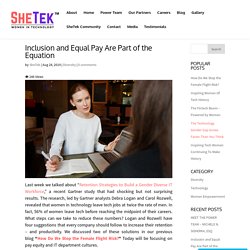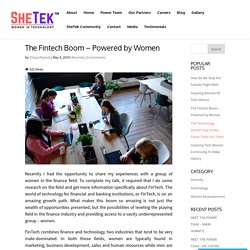

Meet The Power Team – Dr. Chitra Dorai. Dr.

Chitra Dorai has long been a proponent of increasing the number of women in the technology field. She is an AI scientist and thought leader who began her career at IBM, where she was an IBM Fellow and Global CTO for Cognitive Services. Why Artificial Intelligence Is One of the Best Careers for Women. Artificial Intelligence, along with Data Science and Machine Learning, is one of the newest and most popular fields in technology for women.

It has taken the tech field by storm. AI has opened up opportunities for women to advance technology and the world. The tech industry is looking towards AI for innovative solutions to critical problems like the environmental crisis. Microsoft leads the pack with their initiative AI for Good, through which they partner with different organizations, people, and developers to solve different types of problems.
Currently, Microsoft’s AI programs include AI for Earth, AI for Health, AI for Accessibility, and AI for Humanitarian Action, which create new technology and provide grants to researchers who change the world. With so many opportunities available, where are women in this field? As AI develops, the different people working in the field develop as well. Empowering Women in the Technology Field.
How Data Science Can Fast-Track Your Career Development | SheTek.net. SheTek Power Team Michele Siekerka of NJBIA. Michele Siekerka, President and CEO of New Jersey’s largest business organization, NJBIA, has been a proponent of SheTek since inception.

The Grace Hopper Celebration. The Technology Gender Gap Grows Faster Than You Think. If you were asked, “Is the gender gap in technology getting better?”

What would you say? If you said that women are getting more jobs now and advancing in this industry, your answer wouldn’t be wrong – but it wouldn’t be correct, either. With all of the recent programs that aim to get women more involved in technology, it may seem that women are catching up to men in the tech industry. In reality, this isn’t the case. A recent New York Times article by Cade Metz says that the gender gap won’t close for another century “if current trends hold.” Inspiring Women Of Tech History. As with many women, Anita Borg didn’t intend to become a computer programmer.

She loved math. Necessity being the mother of inspiration, she taught herself to program while working at a small insurance company. That inspired her to go on and get a PhD in Computer Science from NYU, with research investigating the synchronization efficiency of operating systems. Her skills took her to several companies over the years. Inspiring Women Of Tech History.
Inspiring Tech Women Continuing To Make History. Barbara Liskov was always interested in mathematics.

Her parents encouraged and supported her interests in math and science, never telling her that it wasn’t a place for a girl. Barbara studied mathematics at Berkley. When she wanted to advance her studies, she applied to Berkley and Princeton; however Princeton wasn’t accepting female students in the math department. She decided to move to Boston, and discovered she had a fascination for computers while working at Mitre. Within a year she took a programming job at Harvard where she worked on language translation. Her attraction to computers continued and she finally received her Ph.D. from Stanford.
How Do We Stop the Female Flight Risk. A recent study by global research and advisory firm, Gartner, shows that women leave technology jobs at “twice the rate of their male counterparts”.

By the time they reach the midpoint of their careers, 56% have dropped out. With more than half leaving, it’s easy to see why there are fewer women at senior levels. This is creating a dismal scenario for the future of growth at executive levels because so few women are even in computer science. Only 18% of computer science graduates are women, so when more than half of them leave, a very small percentage of women are left in the field of technology. How can these rates be changed? Inclusion and Equal Pay are part of the Equation. Last week we talked about “Retention Strategies to Build a Gender Diverse IT Workforce,” a recent Gartner study that had shocking but not surprising results.

The research, led by Gartner analysts Debra Logan and Carol Rozwell, revealed that women in technology leave tech jobs at twice the rate of men. In fact, 56% of women leave tech before reaching the midpoint of their careers. What steps can we take to reduce these numbers? Logan and Rozwell have four suggestions that every company should follow to increase their retention – and productivity. We discussed two of these solutions in our previous blog “How Do We Stop the Female Flight Risk?”
A key to increasing the likelihood of a woman staying at a company is making pay equality a corporate priority. The Fintech Boom – Powered by Women. Recently I had the opportunity to share my experiences with a group of women in the finance field.

To complete my talk, it required that I do some research on the field and get more information specifically about FinTech. The world of technology for financial and banking institutions, or FinTech, is on an amazing growth path. What makes this boom so amazing is not just the wealth of opportunities presented, but the possibilities of leveling the playing field in the finance industry and providing access to a vastly underrepresented group – women.
FinTech combines finance and technology, two industries that tend to be very male-dominated. In both those fields, women are typically found in marketing, business development, sales and human resources while men are more evident in programming and leadership. There Is Progress, But Not Enough.